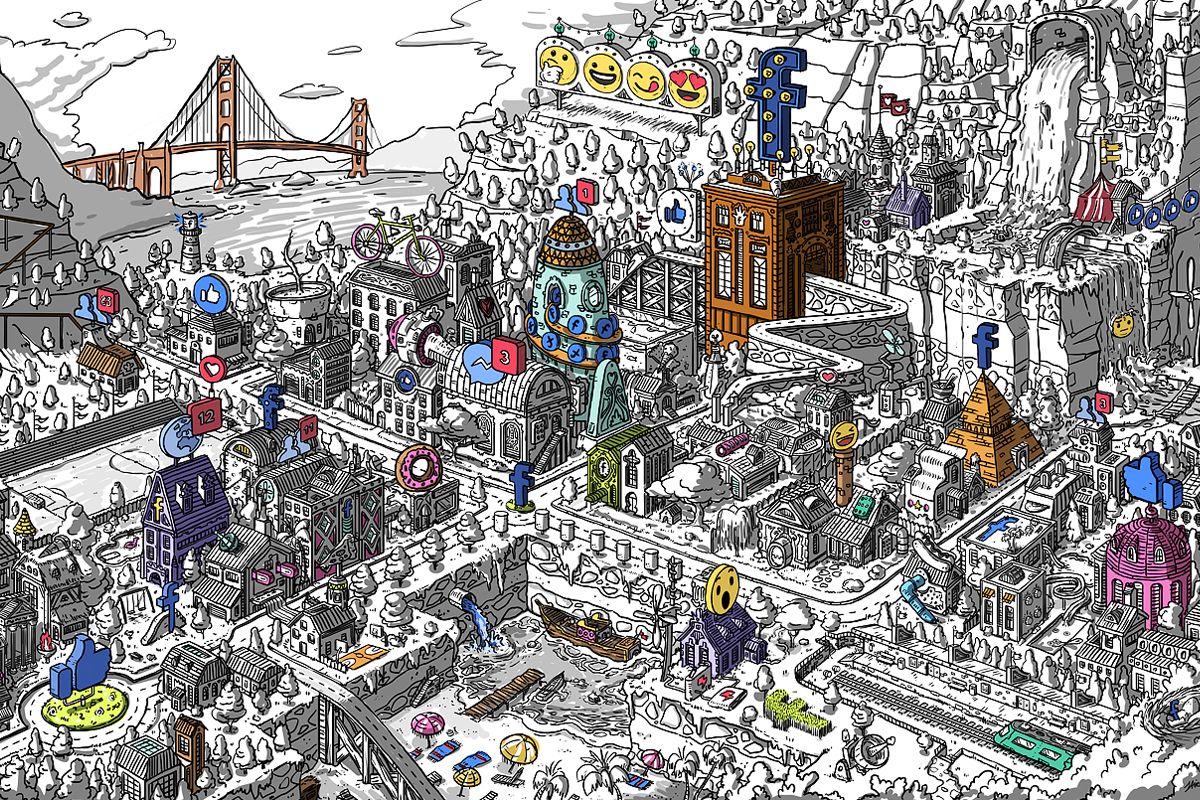FEDE DURAN
Updated Tuesday, March 1, 2022-08:57
Share on Facebook
Share on Twitter
send by email
Comment
Once upon a time there was a son of a teacher and a police officer who drew tirelessly.
Colored pencils, erasers, Greyhound sheets, notebooks, and pencil sharpeners formed a motley, monolithic evidence.
The boy,
Javier Arrés
(Motril, 1982), would study Fine Arts.
When the moment happens, however, disappointment breaks out.
"Academicism was so brutal that I only went to drawing classes. Years passed and then I met a theater director who suggested that I train in graphic design and multimedia production," recalls Arrés, one of the most sought-after crypto-artists in the world. planet.
That little twist forged his career.
Spain, he sadly admits, was never an option.
A string of jobs in different graphic design agencies in Madrid (logos for weddings, baptisms and communions) filled the fridge, but the real work began when I got home late in the afternoon.
"My goal was to develop my own style, otherwise they would ask you to copy others. I've always believed that the market was international. Meritocracy doesn't work here."
His illustrations have appeared in such prestigious mastheads as
The New York Times
and
Corriere della Sera
.
Part of the dream was fulfilled, although the underlying problem persisted: the draftsman/illustrator has, like the carpenter, the journalist or the property manager, few opportunities for expansion.
Behind the scenes, however, a revolution was brewing.
Zucktown-New York Times.
Under the wing of the blockchain ,
non-fungible tokens (NFT)
are born , a resource that certifies the authenticity of digital works.
This system is the future of digital property and is already used in areas such as auctions, video games and sports.
Each NFT is assigned a set of metadata, for example, the starting value of the asset purchased, the transactions that have been made and the identity of the originator.
Arrés thus discovered the immense potential of platforms such as
MakersPlace
,
SuperRare
or
Mito
, perfect places to sell his works and protect intellectual property.
The folio now gives way to the tablet and the static drawings suddenly become visual toys, that is, "a surrealist, baroque pop object, full of details and fantasy, with elements of robotics, cables, retro-technology; a machine-object that invites the viewer to imagine and whose usefulness is not fully understood. It is a kind of artifact to play visually in an infinite loop".
The collectors who move in this new environment are younger than usual, they come mainly from the United States, Great Britain, New Zealand and China and are classified, according to Arrés, into three categories: whale buyers (those who live in the of cryptocurrencies and pay for a work between 10,000 euros and 100 million), the affluent middle class (where the range ranges between 3,000 and 10,000 euros per piece) and the low range (which starts from around 100 euros).
In Spain, Arrés knows only one collector,
Pablo Fraile
.
He notes the crypto artist a generation gap.
"To the older ones this seems like a martian, although it is also true that there have always been few collectors in the country. It is not that our mothers went to buy a Picasso every month. The gamers are less oblivious to this trend because in the Video games are used to paying for non-expendable things (for example, a fuchsia jacket for their favorite character or a triple-barreled gun)".
The artist with his work The Big Ones.
The big question is how this emerging art that the elderly do not understand and the young celebrate is consumed.
"Well, just like the usual art, but on other devices. Many collectors have large screens in their homes or galleries designed exclusively for these works, and they can show them from their mobile phones or incorporate them into their museums in the metaverse. The utility it is also given by the artist and the NFT: the fact of owning a visual could give you the right to participate in an exclusive bid. It is like providing additional value through a club", explains Arrés.
His personal record was the
$45,000
earned by the single edition of
Rock Never Dies .
, a one and a half minute loop with music, psychedelic skyscrapers and an air of Yellow Submarine (George Dunning, 1968), the animated film based on the song by the Beatles.
Javier Arrés was named emerging artist of 2017 by the Californian contemporary art magazine
Hi-Fructose
, won in 2019 at the
London Art Biennale
and has come to occupy fourteenth place in the world list of crypto artists.
A couple of months ago he moved to Fuerteventura in what could be a modernized (and very flexible) revision of César Manrique's journey.
"I live from this because I am 100% international. In the talks I give I still notice the rejection caused by cryptocurrencies, linked by many people to dirty money and speculation. We talk, despite everything, about art, and art was, is And it will continue to be a luxury.
Conforms to The Trust Project criteria
Know more
China
New Zealand
United States
grenade
Precursor of 'in vitro' fertilizationThe Paraguayan hell of the son of the gynecologist Ángel Sopeña
EuropaBolsonaro strengthens ties with the ultra-nationalist Orban
HowWhat is the UN, which countries are members and what is its role
See links of interest
Last News
When does the 2021 Income start?
Income 2021
Work calendar 2022
Economy Podcast

